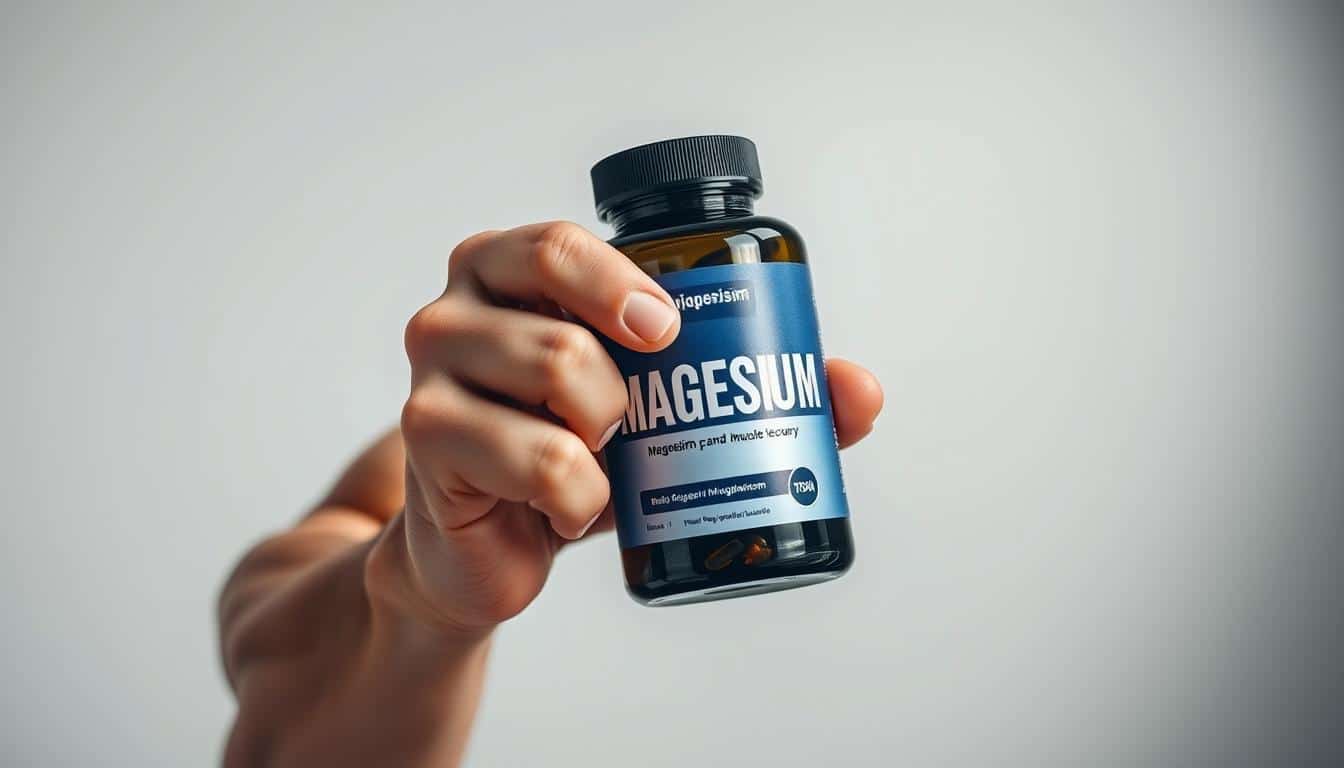Ever wondered why so many athletes swear by magnesium? Whether you’re hitting the gym or training for a marathon, muscle cramps can be a real pain. While science isn’t entirely clear on its effectiveness, many active individuals rely on magnesium to stay cramp-free and recover faster.
Recent studies, like the 2021 MOMH trial, suggest that magnesium might help reduce nighttime leg cramps. On the flip side, a 2020 Cochrane Review found it less effective for random cramps. So, why do athletes still turn to it? Beyond cramps, magnesium supports better sleep and recovery—key for peak performance.
In this guide, we’ll break down how to optimize your magnesium intake to fuel your active lifestyle. Let’s dive in!
What Is Magnesium and Why Is It Important?
Magnesium is a powerhouse mineral that keeps your body running smoothly. It’s involved in over 300 biochemical reactions, making it essential for everything from energy production to muscle function. For athletes, this mineral is a game-changer.

The Role of Magnesium in the Body
This mineral helps regulate calcium transport, ensuring your muscles contract and relax properly. It also supports nerve function, which is crucial for preventing excessive twitching. Without enough of it, your body can’t perform at its best.
How Magnesium Affects Muscle Function
Magnesium plays a key part in muscle contraction and recovery. Here’s how it works:
- Controls calcium flow during contraction and relaxation cycles.
- Reduces lactic acid buildup, helping you push harder during workouts.
- Maintains proper muscle fiber membrane potential for optimal performance.
By supporting these processes, magnesium helps you stay strong and recover faster. Whether you’re lifting weights or running miles, this mineral is your secret weapon.
Understanding Muscle Cramps
Muscle cramps can stop you mid-workout, but understanding them is the first step to prevention. These sudden, involuntary contractions are common among athletes and can happen during or after exercise. While they’re often harmless, they can be painful and disruptive to your training routine.
What Causes Muscle Cramps?
Muscle cramps occur when your muscles contract involuntarily and can’t relax. This can happen due to several factors:
- Dehydration: Losing too much fluid during intense exercise can lead to cramps.
- Electrolyte imbalance: Low levels of minerals like potassium or sodium can trigger spasms.
- Fatigue: Overworked muscles are more prone to cramping.
Understanding these causes can help you take steps to avoid them.
Common Triggers for Athletes
For athletes, certain habits and conditions increase the risk of cramps. Here are some common triggers:
- High-intensity interval training: Pushing your limits without proper preparation can strain your muscles.
- Inadequate warm-up or cool-down: Skipping these routines can leave your muscles tight and prone to spasms.
- Heat stress: Exercising in hot weather can lead to dehydration and mineral loss through sweat.
- Overtraining: Not giving your body enough rest can lead to fatigue and cramping.
- Improper footwear: Wearing shoes that don’t support your feet can cause muscle strain.
By addressing these triggers, you can reduce your risk of cramps and stay on top of your game. For more tips on optimizing your athletic performance, check out our guide on how nutrition affects athletic performance.
The Role of Magnesium in Muscle Cramps
Magnesium has been a topic of debate in the fitness world, especially for cramp prevention. While some athletes swear by it, the scientific evidence is mixed. Let’s explore how it might help and what the research says.
How Magnesium Prevents Cramps
Magnesium helps regulate muscle contractions by controlling calcium flow. This ensures your muscles contract and relax properly, reducing the risk of involuntary spasms. It also supports nerve function, which can prevent excessive twitching.
Additionally, magnesium may reduce lactic acid buildup during intense workouts. This helps you push harder and recover faster. For athletes, these benefits can make a big difference in performance.
Scientific Evidence Supporting Magnesium’s Role
Research on magnesium’s effectiveness is ongoing. A 2020 Cochrane Review analyzed 11 randomized controlled trials involving 735 participants. It found no significant reduction in cramps. However, the review noted limitations, such as a lack of athlete-specific data.
On the other hand, the MOMH trial showed promising results. Over 60 days, participants reported improved sleep quality, which indirectly supports recovery and cramp prevention. This highlights the need for personalized dosing strategies.
| Study | Participants | Findings |
|---|---|---|
| Cochrane Review (2020) | 735 | No significant cramp reduction |
| MOMH Trial | Not specified | Improved sleep quality |
| Pregnancy Study | Pregnant women | Contradictory results in cramp management |
While the evidence isn’t conclusive, magnesium remains a popular choice for athletes. Its benefits extend beyond cramps, supporting overall recovery and performance. If you’re considering it, consult a professional to find the right dosage for your needs.
Magnesium Deficiency and Muscle Cramps
Feeling fatigued or dealing with frequent spasms? It might be more than just overtraining. A lack of essential nutrients, like magnesium, can lead to persistent issues that affect your performance and recovery.
Symptoms of Magnesium Deficiency
When your body doesn’t get enough magnesium, it sends clear signals. Common symptoms include:
- Fatigue and low energy levels
- Muscle twitches or spasms
- Difficulty sleeping
- Headaches and irritability
If you’re experiencing these signs, it’s worth checking your nutrient intake. Addressing a deficiency early can help you stay on track with your fitness goals.
How Deficiency Leads to Cramps
Low magnesium levels disrupt critical bodily functions. For example, it impairs calcium transport, which is essential for proper muscle contraction and relaxation. Without enough magnesium, your muscles can’t function smoothly, leading to cramps.
Additionally, a deficiency can cause lactate accumulation during intense workouts. This buildup of lactic acid makes your muscles feel sore and tight, increasing the risk of spasms. Other effects include:
- Disrupted sodium-potassium pump function
- Increased neuromuscular excitability
- Reduced ATP production, leaving you with less energy
By addressing a deficiency, you can improve muscle function and reduce the likelihood of cramps. Simple dietary changes or supplements might be all you need to get back on track.
Scientific Studies on Magnesium and Muscle Cramps
When it comes to preventing cramps, what does the science really say? Researchers have been studying this mineral for years, but the results aren’t always clear-cut. Let’s break down the latest findings to help you make informed decisions.
Key Findings from Recent Research
Recent trials have explored how magnesium affects cramp frequency. A 2020 update found no significant reduction in cramps after four weeks of supplementation. However, some studies suggest it may help with recovery and sleep quality, which can indirectly reduce cramping.
Here are some key takeaways:
- Daily dosages of 520mg showed limited effectiveness.
- Pregnancy studies were excluded, leaving gaps in the evidence.
- Older adults experienced a placebo effect in some trials.
- Functional outcomes, like athletic performance, weren’t measured.
- More athlete-specific research is needed.
What the Cochrane Review Says
The Cochrane database published a systematic review in 2020, analyzing 11 trials with 735 participants. The review found no significant reduction in cramp frequency. However, it highlighted limitations, such as the lack of athlete-focused studies.
Here’s a summary of the findings:
| Study | Participants | Findings |
|---|---|---|
| Cochrane Review (2020) | 735 | No significant cramp reduction |
| MOMH Trial | Not specified | Improved sleep quality |
| Pregnancy Study | Pregnant women | Contradictory results in cramp management |
While the evidence isn’t conclusive, magnesium remains a popular choice for athletes. Its benefits extend beyond cramps, supporting overall recovery and performance. If you’re considering it, consult a professional to find the right dosage for your needs.
Magnesium Supplementation for Athletes
Athletes often turn to supplements to enhance performance and recovery. Among these, magnesium supplementation stands out as a popular choice. Whether you’re training for a marathon or hitting the gym, getting the right amount of this mineral can make a big difference.
Recommended Daily Intake
For athletes, the recommended daily intake of magnesium varies. Men typically need around 400-420 mg, while women require 310-320 mg. However, intense training can increase these needs. Always consult a professional to determine the right dosage for your body and activity level.
Types of Magnesium Supplements
Not all forms of magnesium are created equal. Here’s a breakdown of the most common types and their benefits for athletes:
- Magnesium Glycinate: Known for improving sleep quality, it’s great for recovery.
- Magnesium Malate: Boosts energy production, ideal for endurance athletes.
- Magnesium Threonate: Supports cognitive function, helping you stay focused during workouts.
- Topical Magnesium: Provides localized relief for sore muscles.
For better absorption, take oral magnesium with meals. This ensures your body gets the most out of each dose.
| Type | Benefits | Best For |
|---|---|---|
| Magnesium Citrate | High bioavailability | General use |
| Magnesium Glycinate | Improves sleep | Recovery |
| Magnesium Malate | Boosts energy | Endurance |
| Magnesium Threonate | Enhances focus | Mental clarity |
| Topical Magnesium | Localized relief | Sore muscles |
Choosing the right magnesium supplementation can help you train harder, recover faster, and perform at your best. Experiment with different forms to find what works for you.
How to Choose the Right Magnesium Supplement
Choosing the right magnesium supplement can feel overwhelming with so many options available. Each form has unique benefits, and understanding them can help you make the best choice for your needs.
Factors to Consider
When selecting a supplement, focus on absorption rates and your specific goals. For example, magnesium citrate is highly absorbable, making it a great general option. On the other hand, magnesium oxide has only a 4% absorption rate, so it’s less effective for boosting levels.
Consider your lifestyle too. If you’re an endurance athlete, magnesium orotate might be ideal. For those looking for cardiovascular support, taurate is a solid choice. Always check for interactions with other medications you’re taking.
Common Forms of Magnesium
Here’s a breakdown of the most popular forms and their uses:
- Magnesium Chloride: Perfect for topical application to soothe sore muscles.
- Magnesium Taurate: Supports heart health and cardiovascular function.
- Magnesium Sulfate: Found in Epsom salts, it’s great for relaxing baths.
- Magnesium Orotate: Boosts endurance and recovery for athletes.
- Magnesium Carbonate: Often used as an antacid alternative.
| Form | Absorption Rate | Best Use |
|---|---|---|
| Magnesium Citrate | 30% | General use |
| Magnesium Oxide | 4% | Less effective for boosting levels |
| Magnesium Chloride | High | Topical application |
| Magnesium Taurate | Moderate | Cardiovascular support |
| Magnesium Orotate | High | Endurance athletes |
By understanding these forms and their benefits, you can select a supplement that fits your lifestyle and goals. Always consult a professional to ensure you’re making the right choice.
Conclusion
Optimizing your routine with the right strategies can make all the difference in staying cramp-free. Start by focusing on dietary sources like nuts, seeds, and leafy greens to boost your magnesium levels naturally. Timing matters too—consider taking supplements in the morning for energy or at night to support recovery.
Monitoring is key. Regular blood tests can help you track your levels, while journaling your cramp patterns can reveal triggers. If issues persist, consult a sports nutritionist for personalized advice.
By combining diet, timing, and monitoring, you can stay on top of your game. Take these steps today to fuel your performance and keep those cramps at bay!


